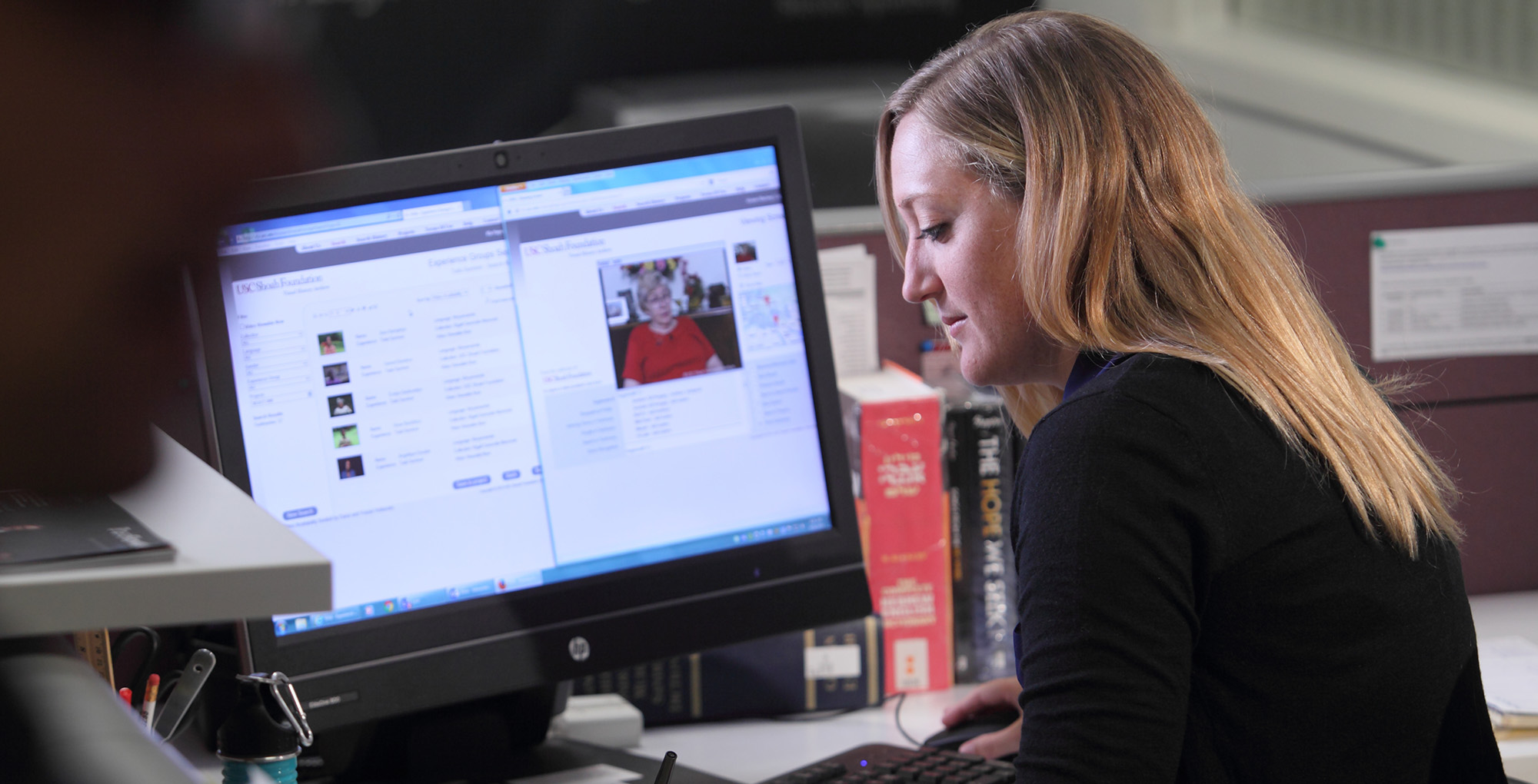Ambitious Program Will Expand Access to Visual History Archive

To meet growing demands for access to the world’s largest archive of genocide testimony, USC Shoah Foundation – The Institute for Visual History and Education is announcing its Visual History Archive Program, which will reimagine how users connect to the testimonies.
Made possible by an initial transformative donation from Lee Liberman, a member of the Institute’s Board of Councilors Executive Committee, the wide-ranging, five-year plan will look to:
- Design and implement a new Visual History Archive platform and interface that will offer enhanced functionality and better search results
- Improve access by building new pathways across a variety of devices for audiences to view and utilize testimony
- Develop multi-modal support resources
The Visual History Archive is the Institute’s digital collection of audiovisual interviews, with 53,000 testimonies of survivors and witnesses of the Holocaust as well as other genocides. The preservation of the testimonies in the Visual History Archive and its use for research and education propels the Institute’s activities and lies at the heart of the promise made to each witness – that their testimonies would be saved and shared so this and future generations can learn from their stories.
USC Shoah Foundation will be looking to form strategic partnerships with companies and other institutions that can help the Institute expand access to the Visual History Archive for a range of users that includes scholars, educators, students, individuals from interested communities, as well as governments and non-governmental organizations. The goal is to maximize access and optimize use, increasing research and education, while continuing to be respectful of the unique nature of the content.
“Twenty years ago, when we began collecting testimonies, we did not foresee a time where making them accessible via the Internet would be a possibility,” said Stephen Smith, executive director of USC Shoah Foundation. “This was a time before Google, YouTube and Facebook, when Americans with Internet access spent fewer than 30 minutes a month on the Web.”
In 2002, access to the Visual History Archive was available at just four universities: University of Southern California, Rice University, University of Michigan and Yale University. By 2008 the number had grown to 21.
Today, 53 institutions (mostly colleges and universities) have access to the entirety of the Visual History Archive via Internet2 in the United States or equivalent high-speed network internationally for an annual subscription. More than 200 places have smaller collections of testimony via discs and hard drives.
Containing 112,000 hours of video testimony, the Visual History Archive is an invaluable resource not only for its sheer volume of information, but also its searchability. Using keywords applied by professional indexers, researchers of all disciplines can locate moments of interest down to a specific minute of testimony.
“The Visual History Archive is of enormous value to the world of academia,” said Wolf Gruner, director of the Institute’s Center for Advanced Genocide Research. “From providing new insights on how the ‘Forgotten Holocaust’ unfolded in modern Ukraine, to helping neuroscientists understand how gratitude is mapped in the brain, the Archive is a priceless academic resource that will benefit not only historians, but researchers of many disciplines for generations to come.”
Seeing the value of making testimonies more easily and readily available, USC Shoah Foundation launched the Visual History Archive Online in February 2012, placing over 1,500 testimonies and full search capability online and making them accessible to anyone connected to the Internet.
“We do not take lightly our responsibility to ensure these testimonies remain in safe keeping,” Smith said. “We always proceed with caution and care when determining how to strike the balance between widening access and protecting the value of these life stories.”
As is, the number of users of the Archive who intersect with testimony amounts to about 15 million annually. The Institute hopes to expand access dramatically in time for the Institute’s 25th anniversary in 2019.
Liberman’s donation enables the Institute to begin the process of carrying out this sweeping transformation. The Institute will continue to raise funds on an ongoing basis to see the project to completion.
By building an infrastructure with new interfaces and significantly enhanced functionality, the Institute will ensure that the Visual History Archive is a living, growing entity that helps people make meaningful connections. The Visual History Archive will be more than a monument – it will be a dynamic and self-perpetuating digital facility, supporting diverse communities of users, thus enhancing research and education.
Like this article? Get our e-newsletter.
Be the first to learn about new articles and personal stories like the one you've just read.